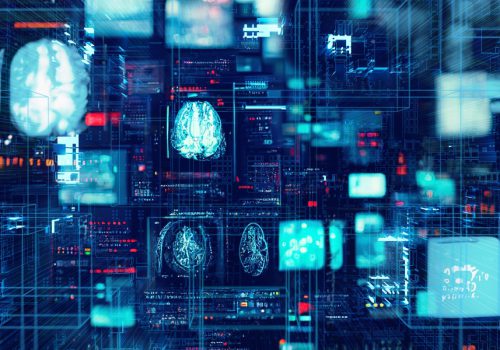Business Intelligence, Big data, and Data Mining are all buzz trending words, in multiple industries, different forums, and C–level strategy discussions. All the talks and discussions about these three intersecting subjects matter for several reasons:
- The next stage of human evolution is digital.
- AI/ML is a transformative general purpose technology that is affecting and will continue to play a huge role in the way we live and work as humans.
- Transformative technology comes like a wave, one thing leads to another and it does cause massive disruption in multiple industries, creating new sets of demand and supply in its wake.
- The huge volume of data that is generated each year, which doubles every 2 and a half years, has to be processed for value creation.
What really are Business Intelligence, Big Data, and Data Mining? Do they really have anything in common? Do they even really intersect at some point in value creation? Let us, firstly, understand what this subject matter is, and then we will see how they relate, have clarity, and intuitively separate the hype from the reality of what can be accomplished with one versus the other.
Business Intelligence is a technologically driven process of analyzing data, and technical information and presenting it in a user-friendly view, such as reports, charts, dashboards, and graphs for actionable business decision-making. It informs decisions and combines a variety of tools and technologies to achieve this. So it is a process, not a silver bullet that automatically gives an organization meaningful insight to its data collection. Data is the new oil, if your organization is to stay ahead of the competition with innovative solutions and services, it must have the right tools and technology, and more importantly the right people to put it all together by asking the right questions to derive meaningful insight from their data collection.
This is what business intelligence is all about. Big data is larger, more complex data that is generated and transmitted in real-time from a variety of sources. It could be structured, semi-structured, and unstructured data.
Examples include social media chats and conversations, healthcare devices and the information it sends, household IoT devices, equipment sensors, etc. Not every data that is huge is classified as big data.
Its attributes or what marks it as big data include;
- Volume – A large quantity of data that is generated and sometimes stored for further processing
- Variety – The type and nature of data that keeps evolving
- Variability – The distance of data points from one another from the distribution center
- Velocity – The speed of data generation or processing is heavy, fast, and large
- Veracity – The quality of the data being analyzed
Big data application is for batch processing or realtime processing, which to be used depends on what you are trying to achieve or the question you are seeking an answer to. Data mining – data mining is the process of sorting through large data sets or blocks of information to identify patterns, trends, or relationships that help in solving business problems through data analysis. Its endpoint is to enable an organization to predict future trends and make better–informed business decisions. It is also known as Knowledge Discovery in Data (KDD).

Data mining is at the heart of the Digital Revolution that is ongoing, it has created the cloud computing industry with its many specializations and cutting-edge technology that has evolved from the Hadoop architecture, Apache Spark, and now Databricks. All of this is needed because conventional databases, such as MySQL, Postgres, MongoDB, etc., cannot handle big data. To sum it all up, Business Intelligence answers the business questions of: “what has happened?,” or “what will happen in the future?” Big data and its machine learning algorithm toolkits tell an organization holistically, it is largely probabilistic while Business Intelligence is somewhat deterministic. Data mining is the advanced toolkit for Business Intelligence and Big Data Analysis.
For those in leadership positions in this industry, it is highly important to make sure that you are well-informed with all the latest trends and news in order to ensure that your organization is up to standard with all best practices.
It is the leaders’ responsibility to make sure that the team is also well-informed by being transparent. Utilizing technologies that process, store, and facilitate data analysis is essential to setting up an effective big data environment. The utilized infrastructures are deployed more than once and different infrastructures to cover all various aspects of data for an organization. Understanding how to use and manage big data in your organization can be a massive advantage in the market.
Business Intelligence provides your organization with the needed knowledge on the impact of current practices within your organization, employee satisfaction, and all internal data you may need to push your strategies in the right direction, such as company satisfaction, media reach, employee performance, and much more. For leaders that employ that knowledge, of the analysis of past and current data, in their organization’s strategies and future plans in the correct way, the impact is sure to be noticeable.
As data mining is predominantly used to identify smaller and specific pieces of data, organizations are evidently seeing the benefits of sorting through large data in order to pinpoint relevant information. This is done in an effort to make the management’s and leaders’ decisions more precise and beneficial to the organization.









